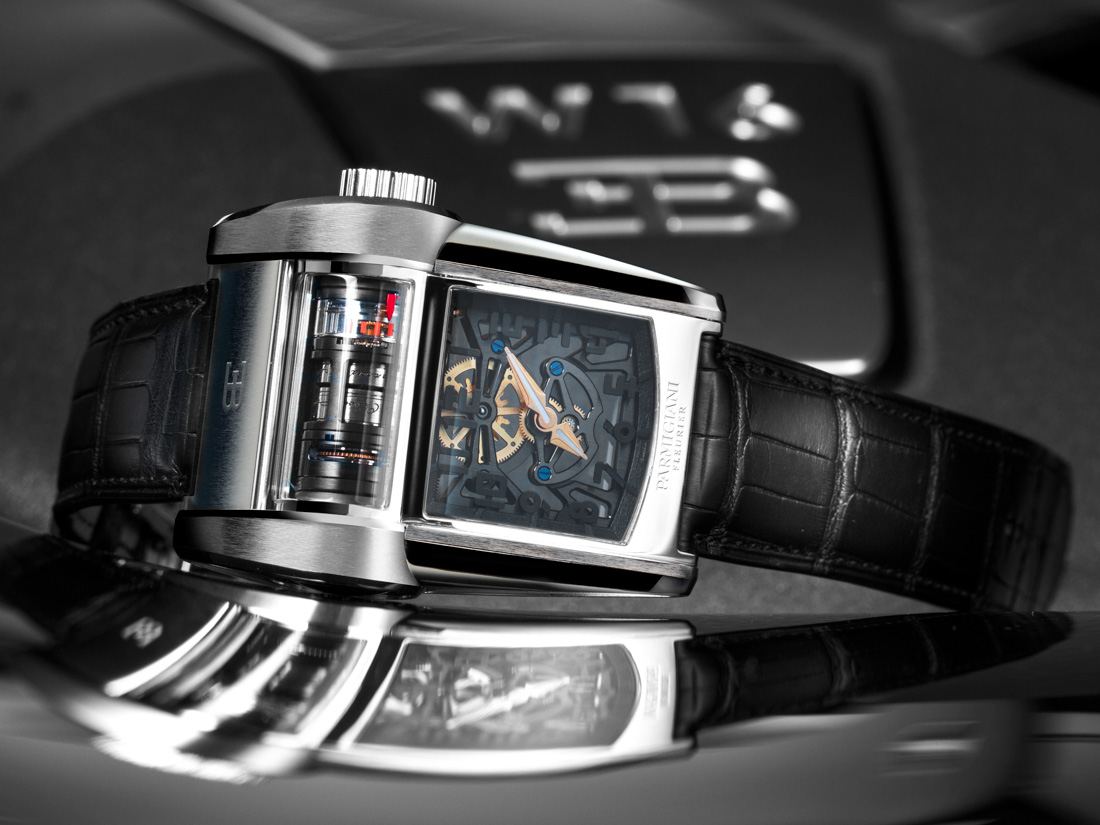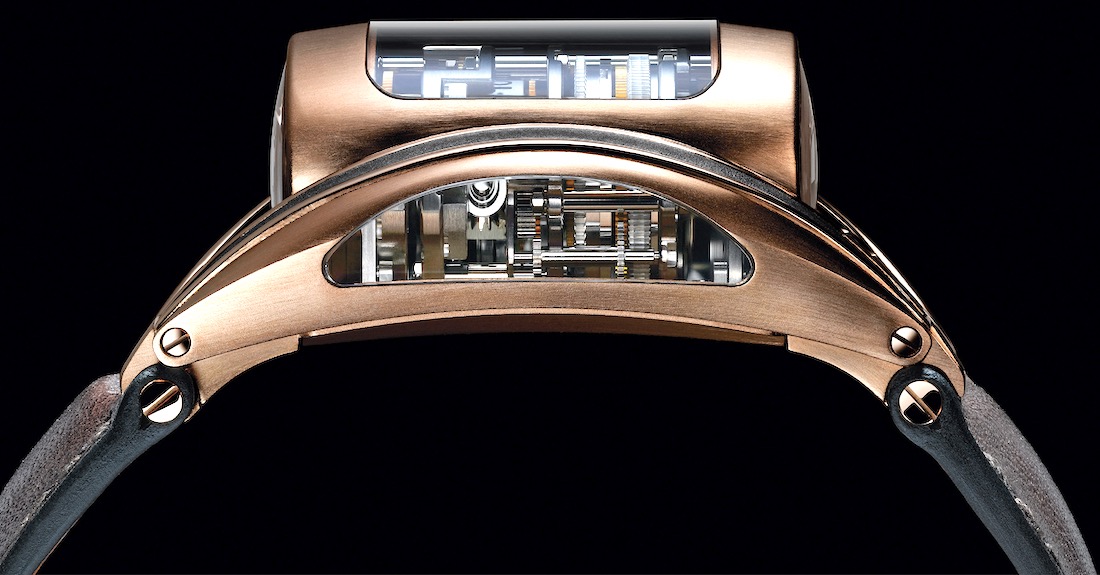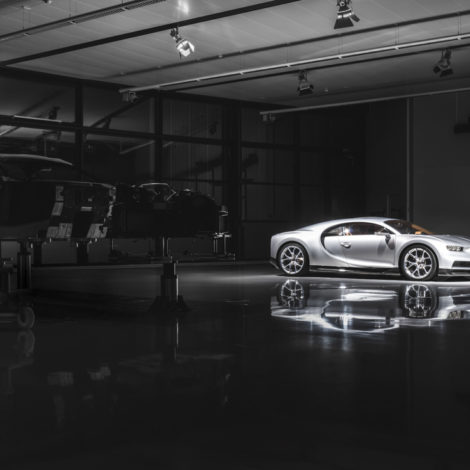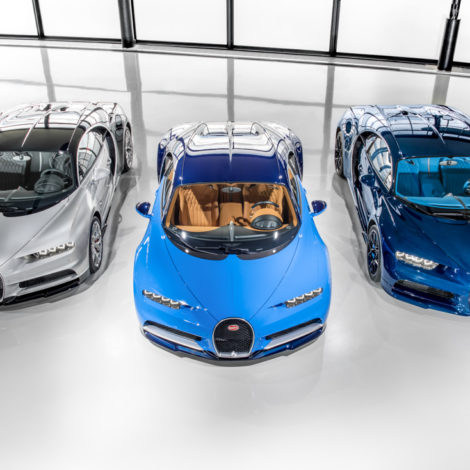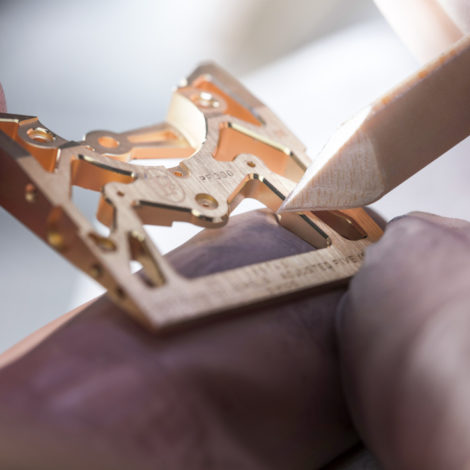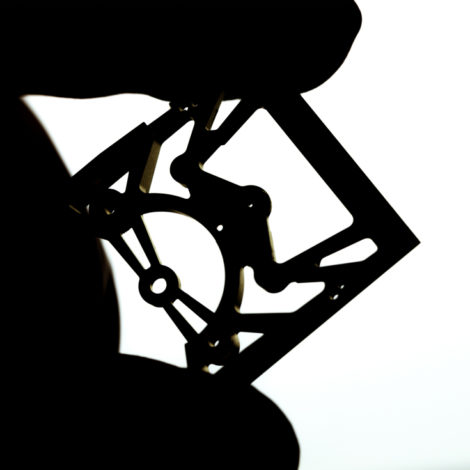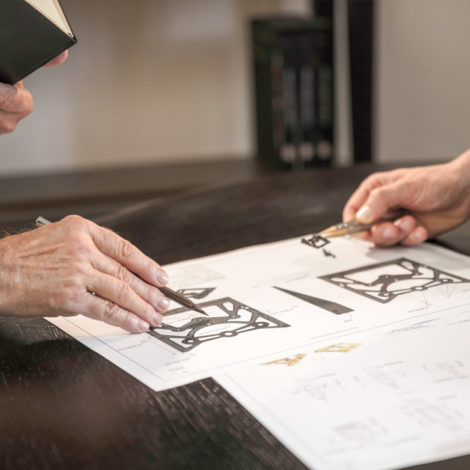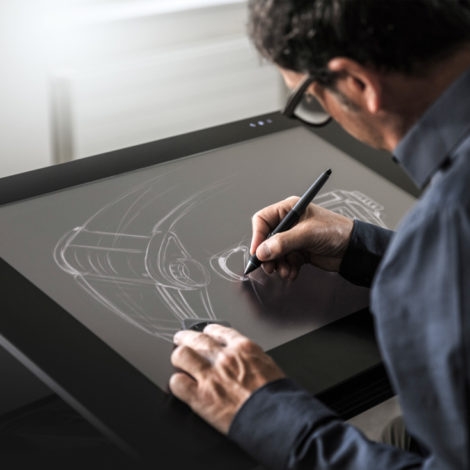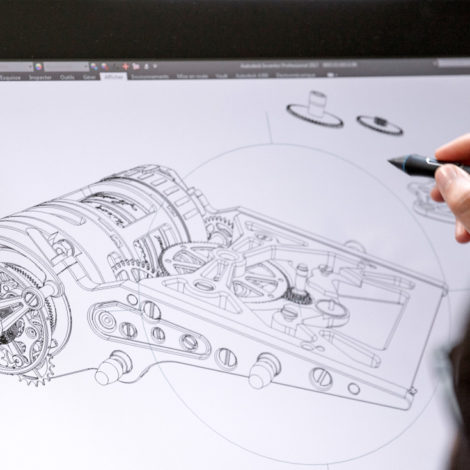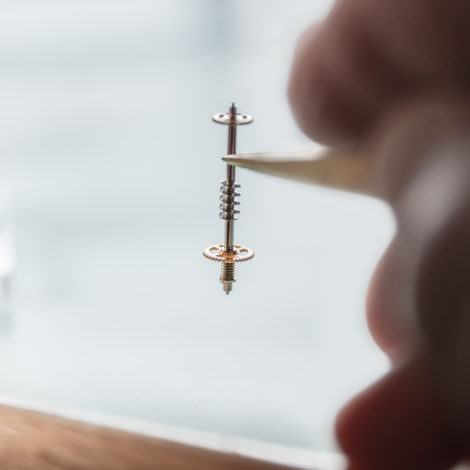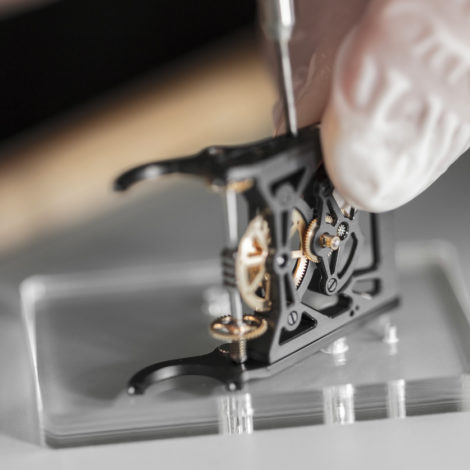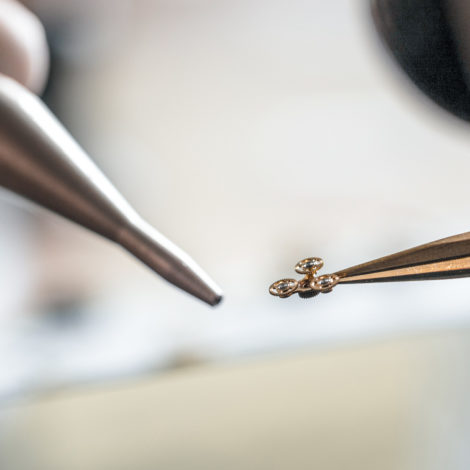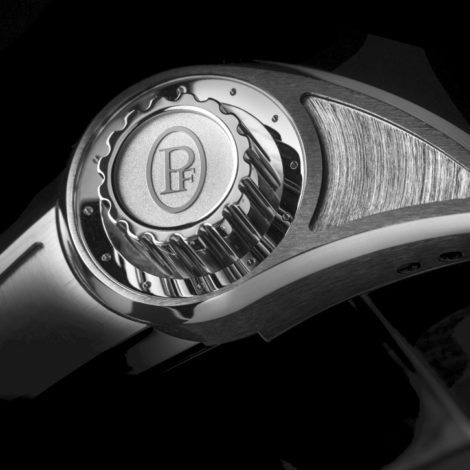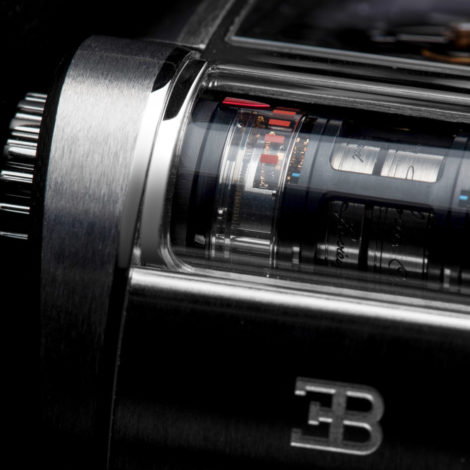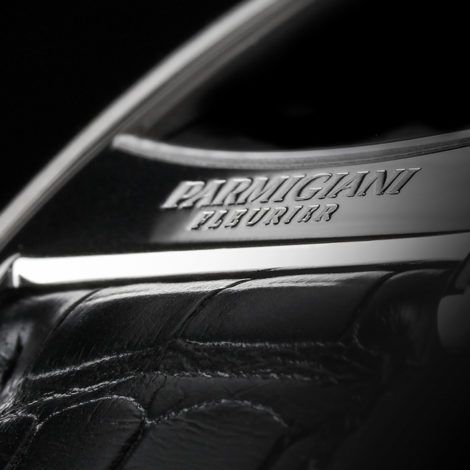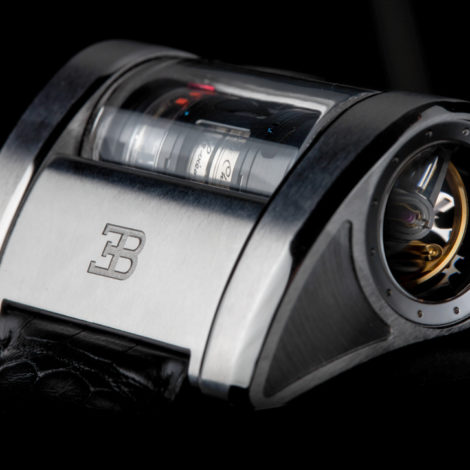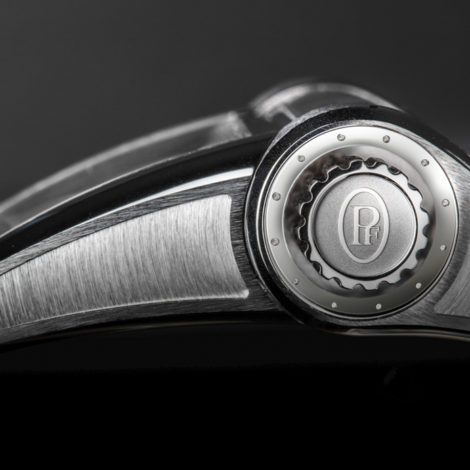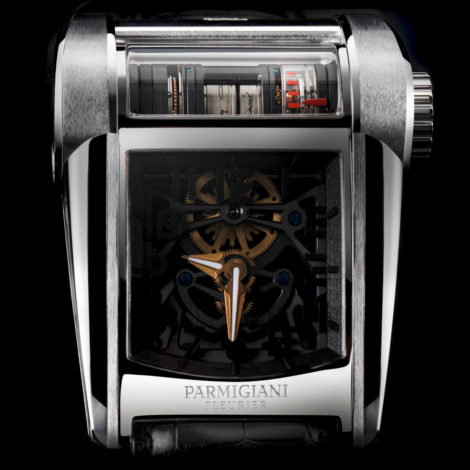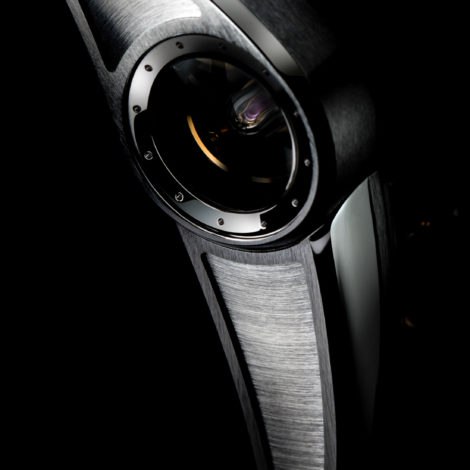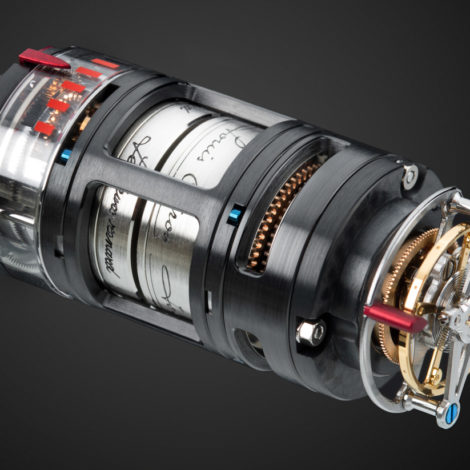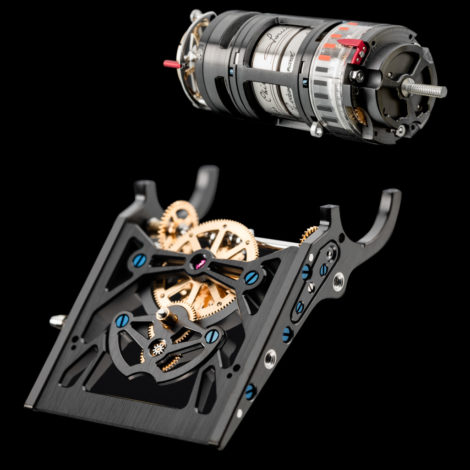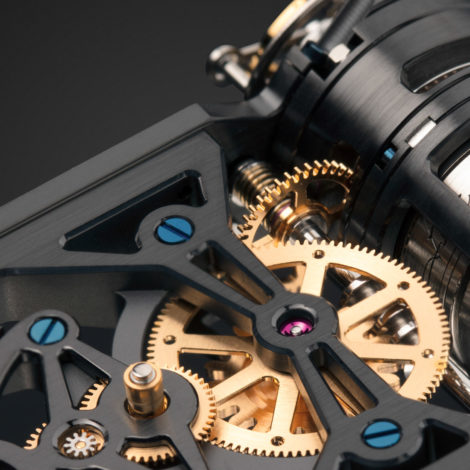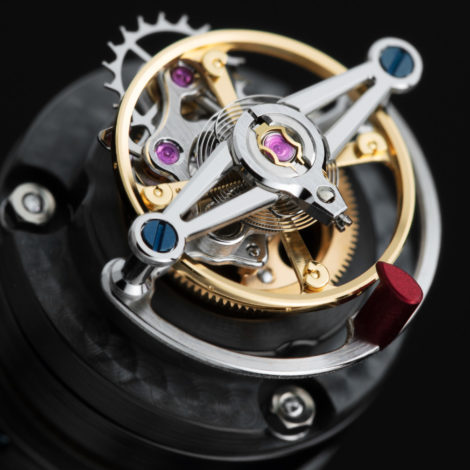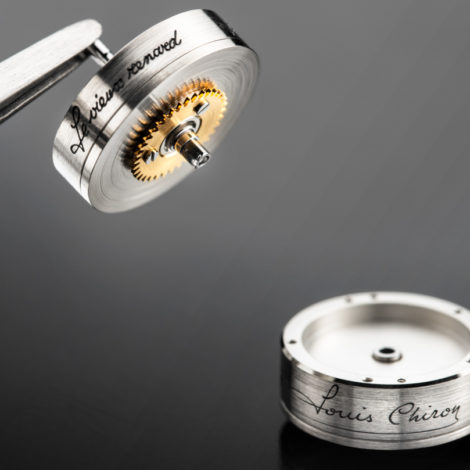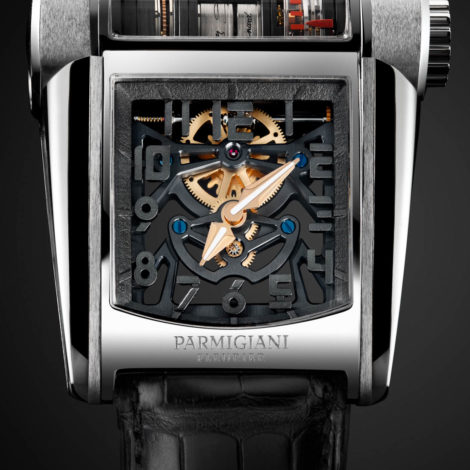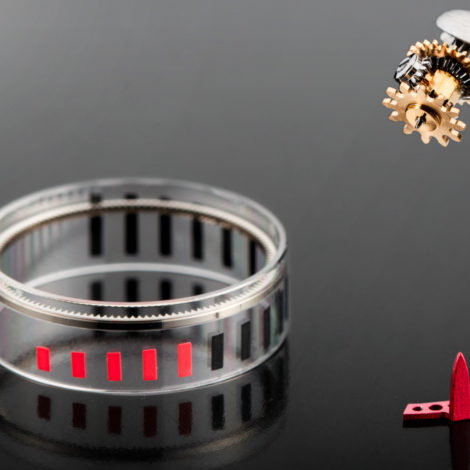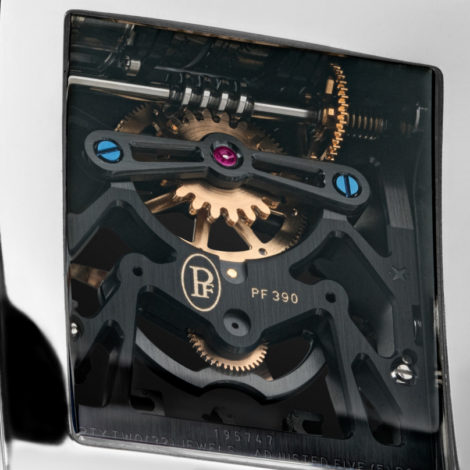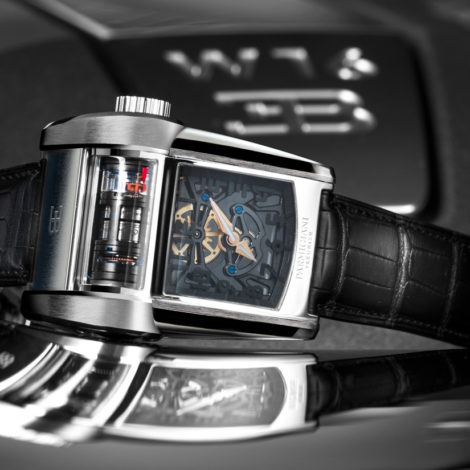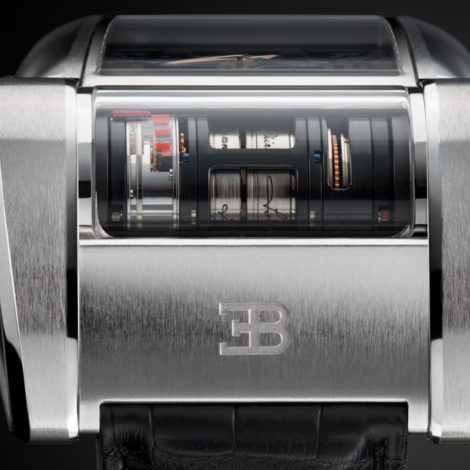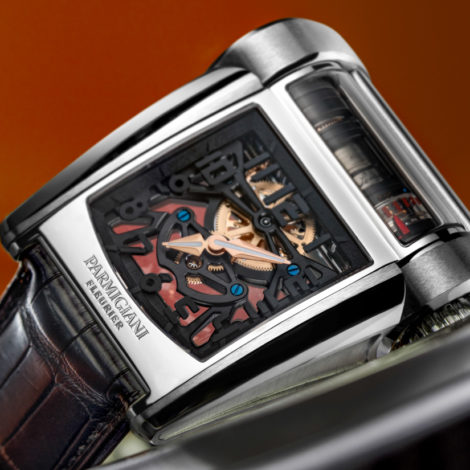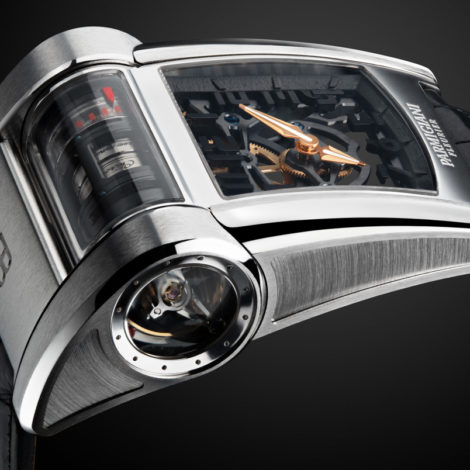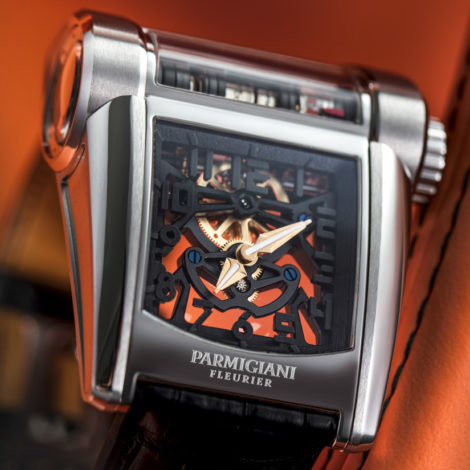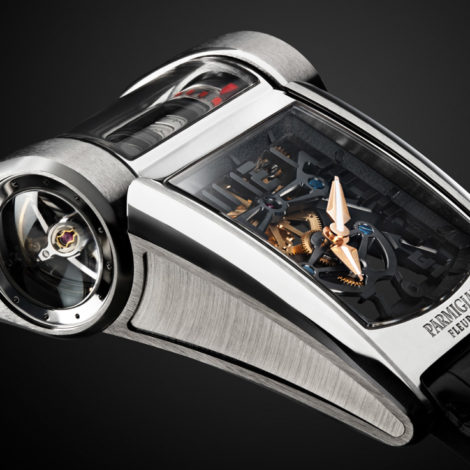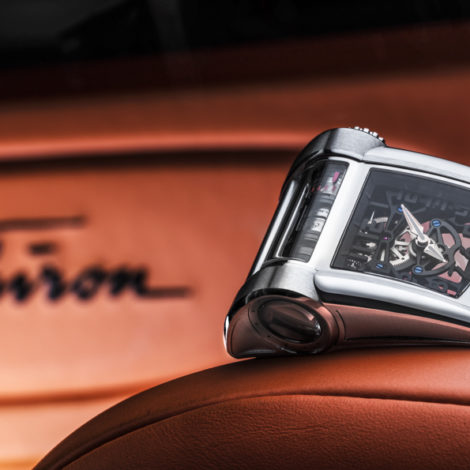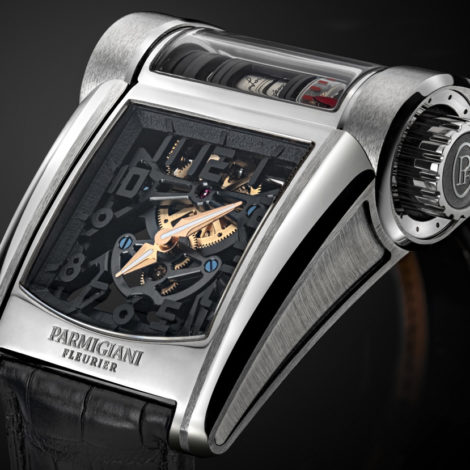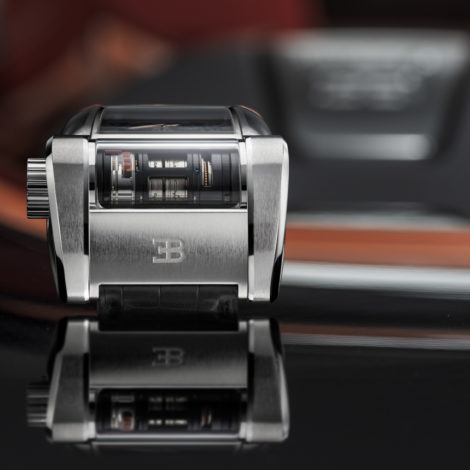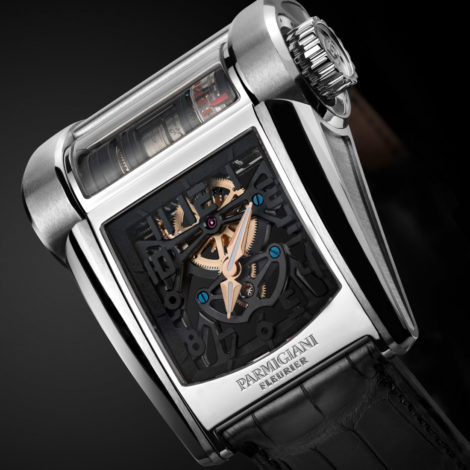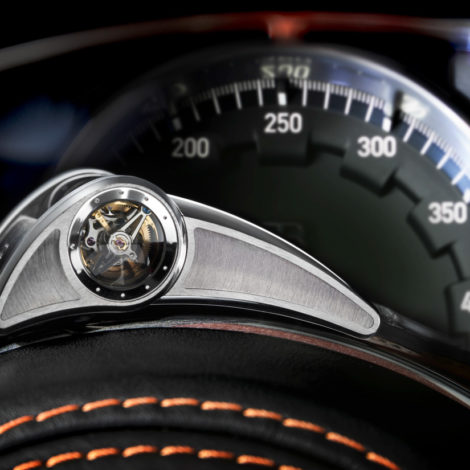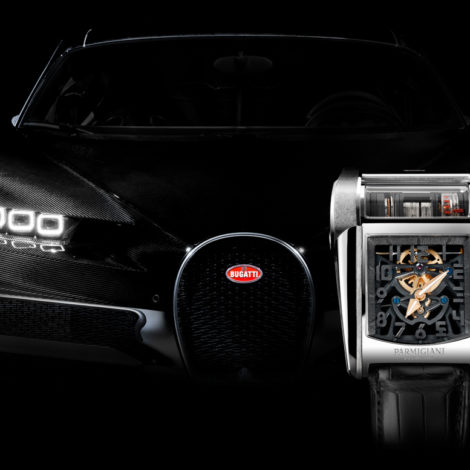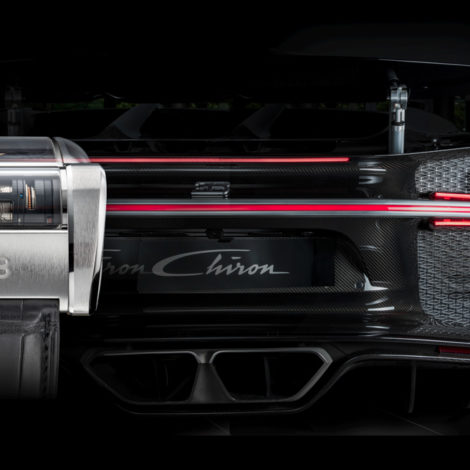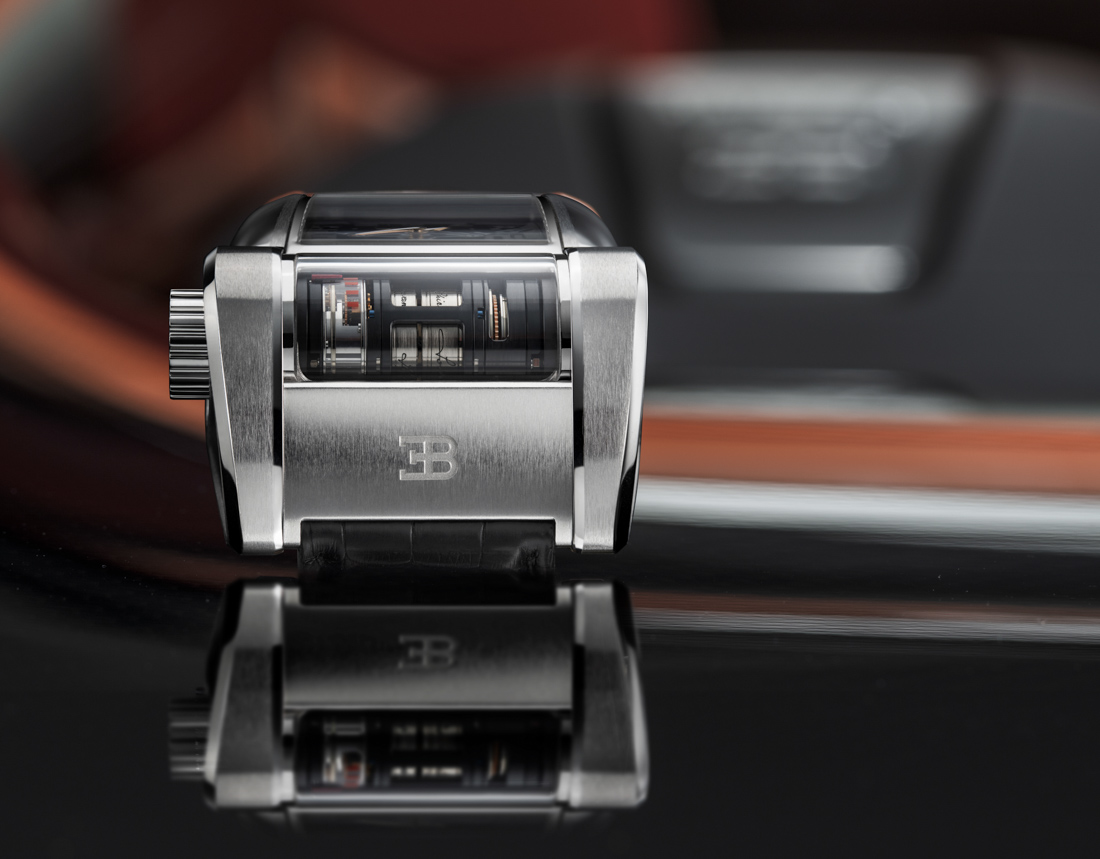
Today marks the launch of the Parmigiani Fleurier Bugatti Type 390, a watch designed to go with the latest Bugatti Chiron hypercar. In line with most of the pieces that came from Parmigiani’s now 13-year partnership with carmaker Bugatti, the Type 390 is another very unusually shaped piece filled edge to edge with an equally unique movement. Just like the Bugatti Chiron, the Parmigiani Type 390 also appears to have been beautifully and exceedingly over-engineered, so as to get the attention of even the most bored and spoiled watch and car lover.

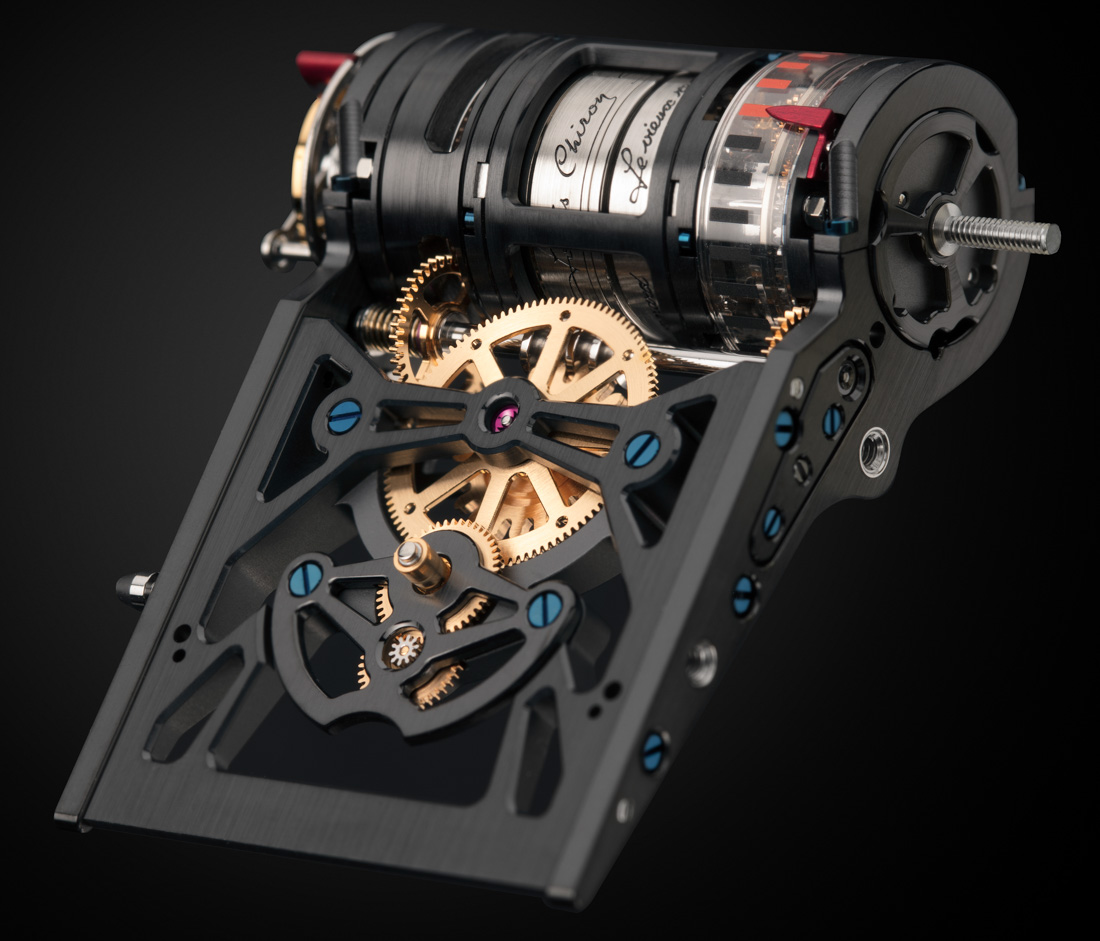
While cars must comply with ever stricter emissions regulations and safety requirements – well, some did get away with cheating their way around them, but that’s for another blog to discuss – watchmakers remain free to do whatever the heck they want, so long as they stay within the often loosely interpreted limitations of wearability, reliability, and functionality. Parmigiani Fleurier sounds very proud of the Type 390’s allegedly effortless tackling of all these issues.

A quick glance 13 years back reveals an interesting fact: Parmigiani was among the very first luxury watchmakers to make complicated watches in highly unusual shaped cases – something perfectly common today, in the age of MB&F HM4s, Deep Space Tourbillons, and Hublot LaFerraris. But back in 2004, when the oddly shaped and equally obscurely named Parmigiani Type 370 came out, there had been very few others like it before.
Well over a decade later, the Type 390 is a borderline insane arrangement of exceedingly niche engineering solutions. Here’s a random selection, just so you can appreciate what you’re getting yourself into when you try to wrap your mind around this watch. There’s a planetary gear system, a worm screw “angle transmission,” a co-axial triangular barrel coupling system, a 12° articulated case, a torque limiter, a bevel gear differential, rod clamp that eliminates the setting lever, yoke and yoke spring, the world’s smallest ball bearing, and a flying tourbillon with variable moment of inertia balance wheel, and a Breguet overcoil. Basically none of these, maybe save for the overcoil, will you find in an ordinary timepiece.


The weird, wedge-like shape of the Parmigiani Fleurier Type 390’s case will appear familiar and yet strangely odd when compared to the Type 370, or even something more recent, like the Super Sport (hands-on here). What Parmigiani has done is re-engineer the movement to flip the way time is displayed: previously it used to be in the tubular section, but now that segment is facing away from the wearer and it is the steeply angled and intricately framed rectangular bit that rocks the time display, hence offering a much larger and more legible dial.
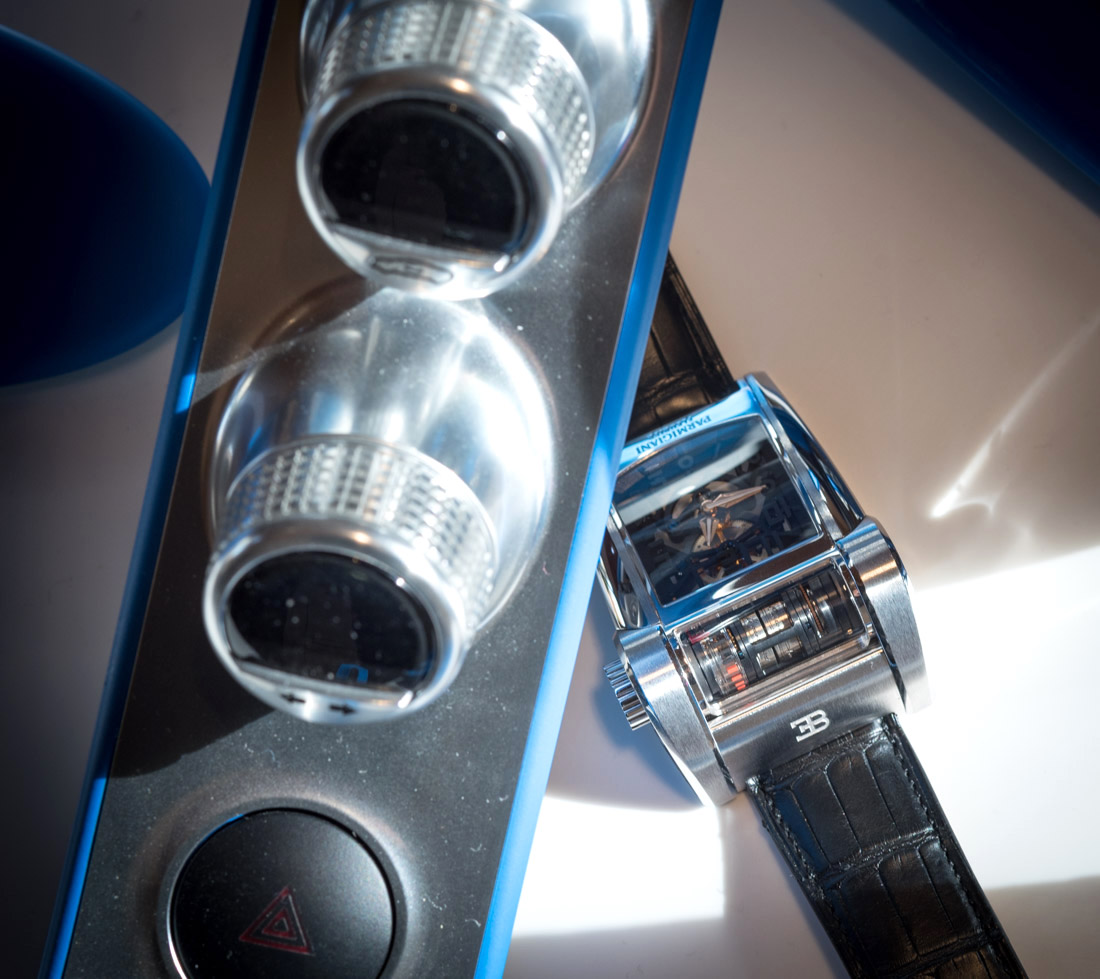
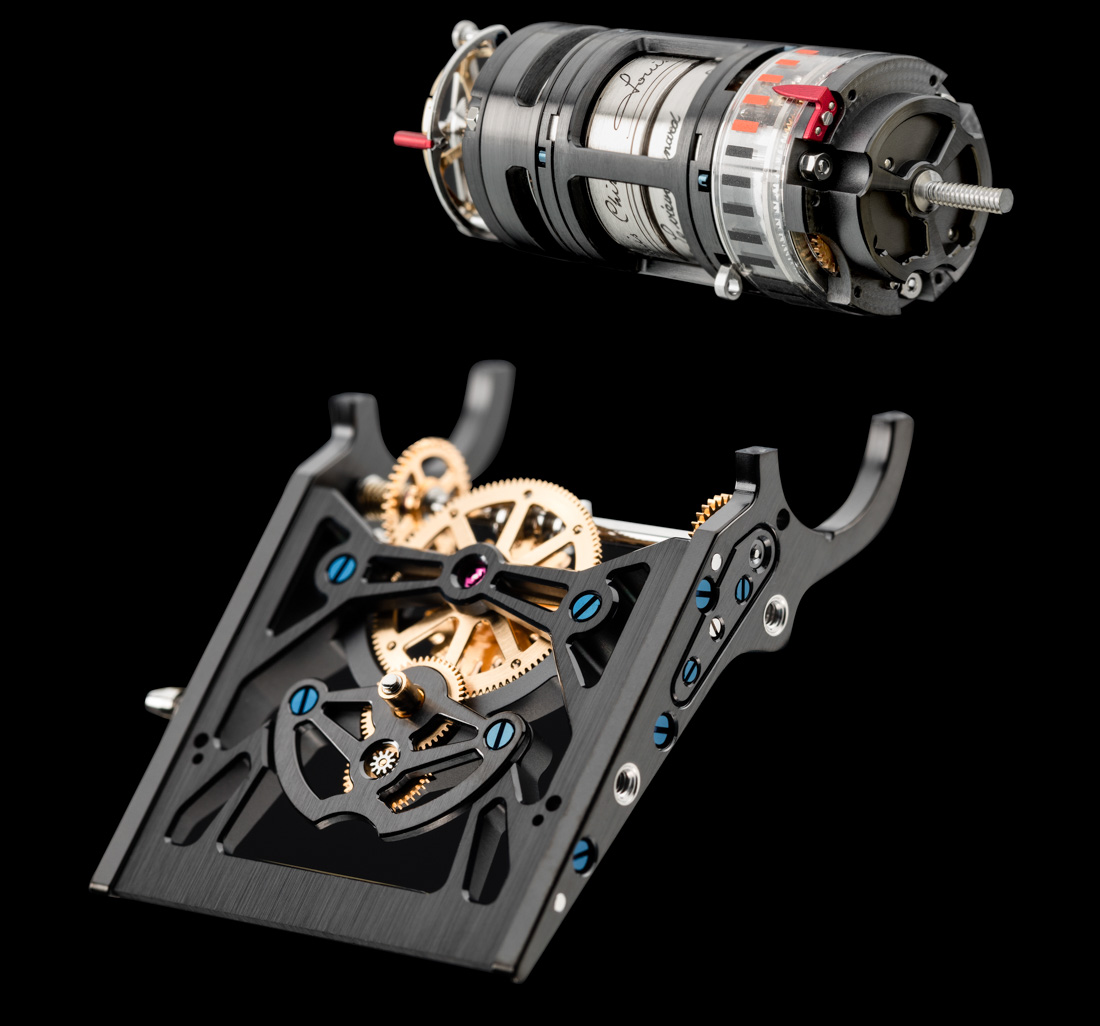
This meant that the movement had to be packed all into that cylindrical module, which now incorporates the two, series-coupled barrels that provide a total of 80 hours of power reserve, along with some very clever gearing to transmit that power in all three directions. First of all, the barrels are linked to the clever power reserve indicator located right behind them through a bevel gear differential.
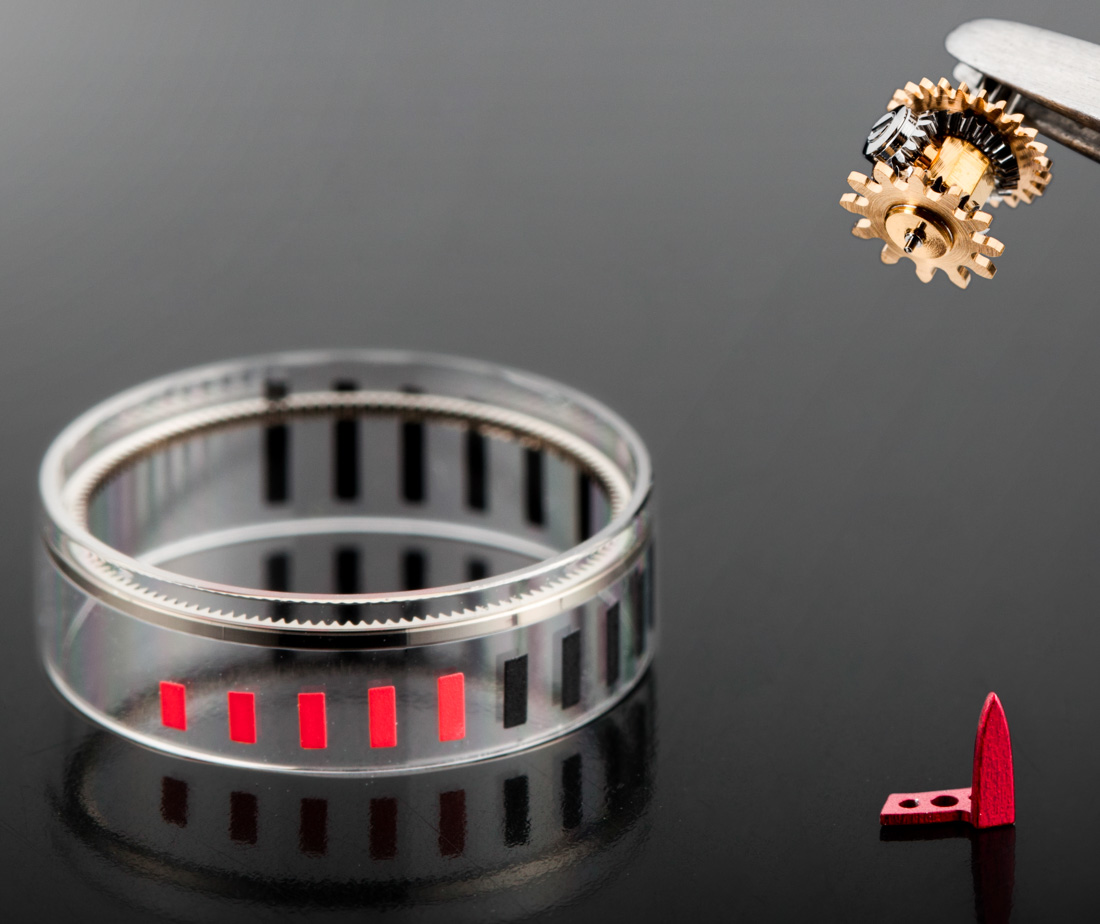

Second, through a complex gearing system, the barrels are connected to the flying tourbillon that caps the cylinder from the other end. Last, the whole movement is linked to the perpendicular time display through an “angle transmission” that allows it to transfer energy through a 90° angle into the display on the dial.
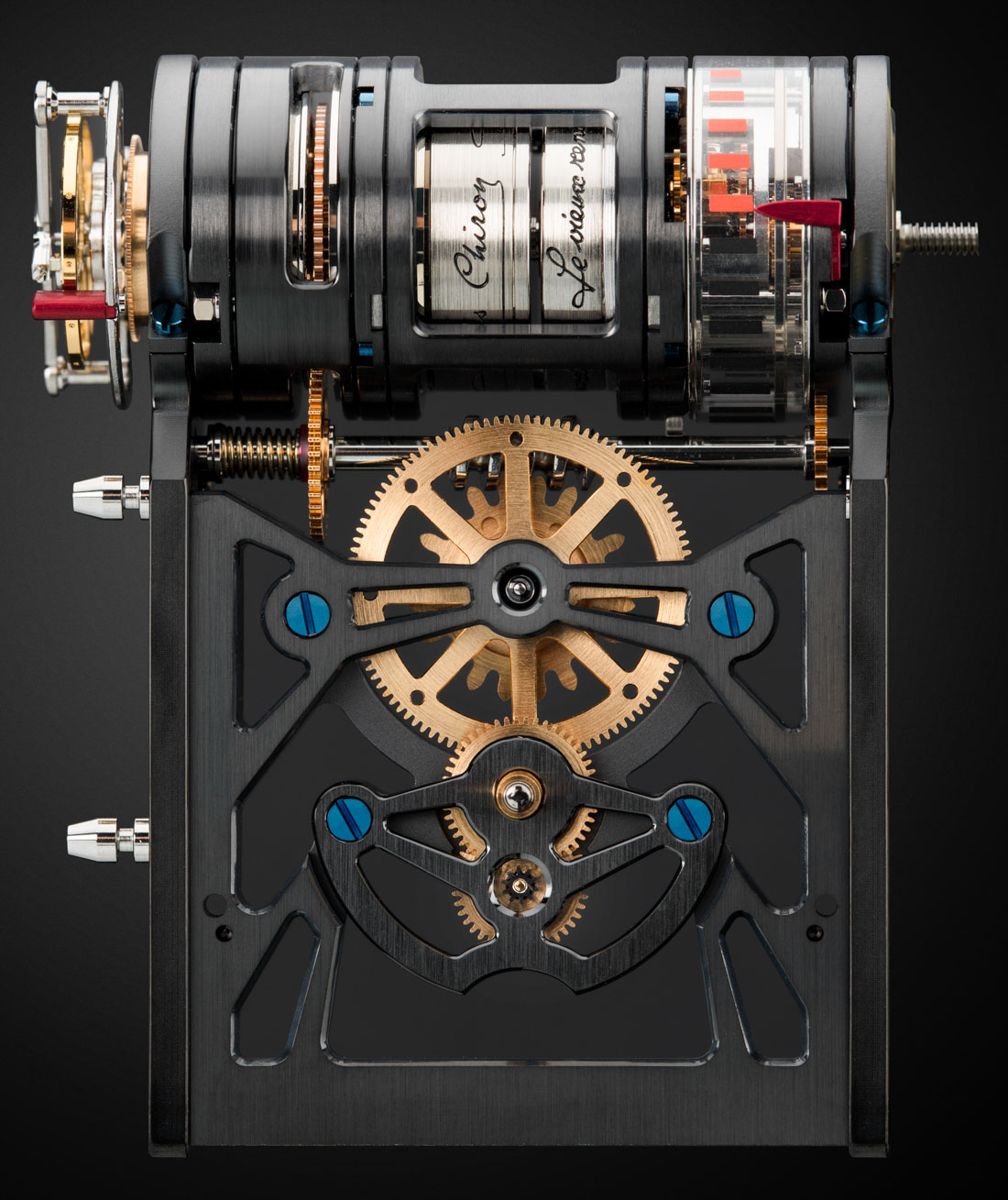
All this remarkable complexity goes strongly against what many will only see as a weird, wedge-shaped watch, without ever giving a second thought to how it could possibly function. Surely, an ultra-thin movement could’ve been crammed under that angled dial, but that would clearly be disappointing from a watch produced by a brand with a vertically integrated manufacturing background – and, mind you, a watch designed and produced to go with the fastest production car in the friggin’ world.
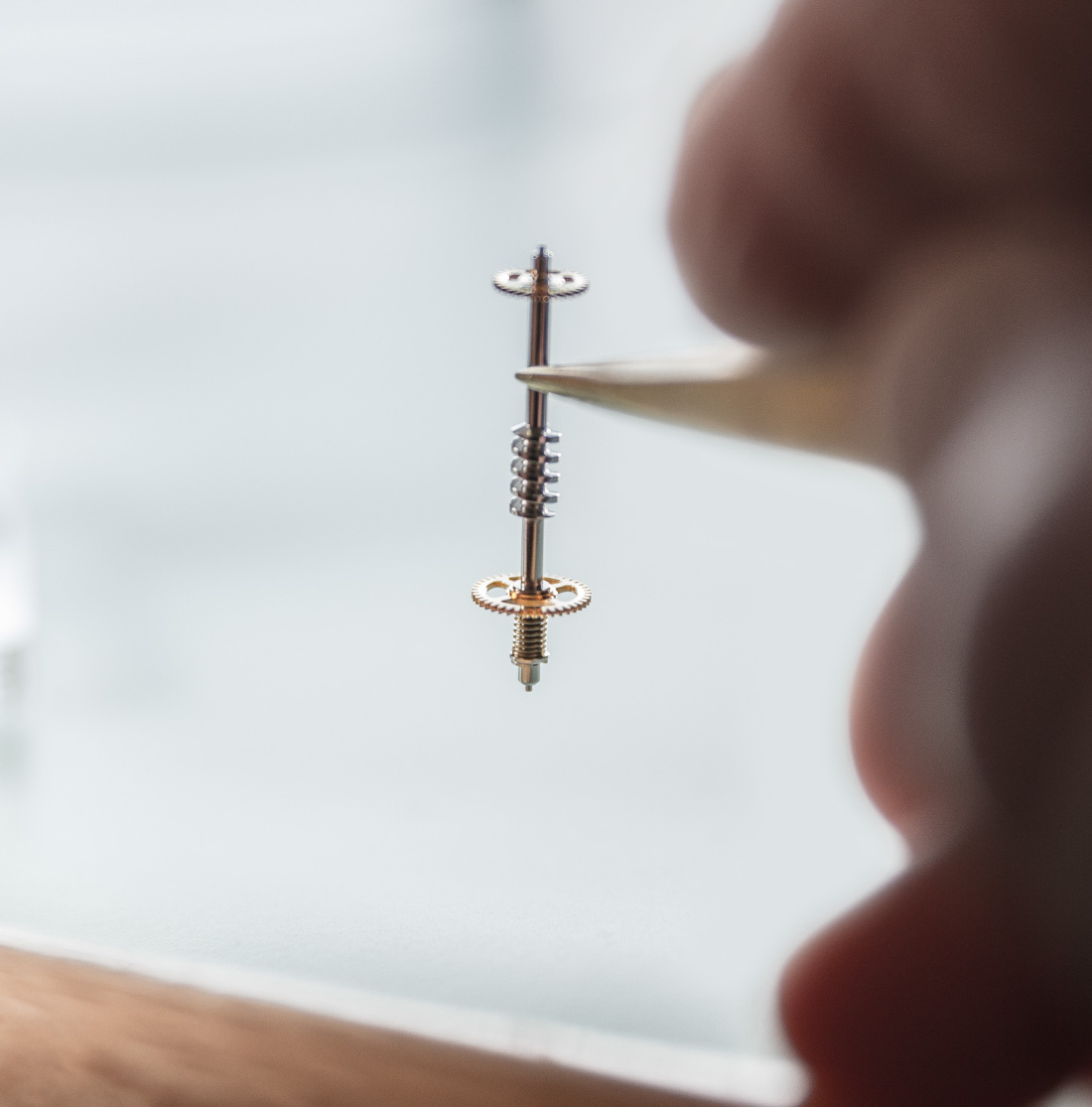
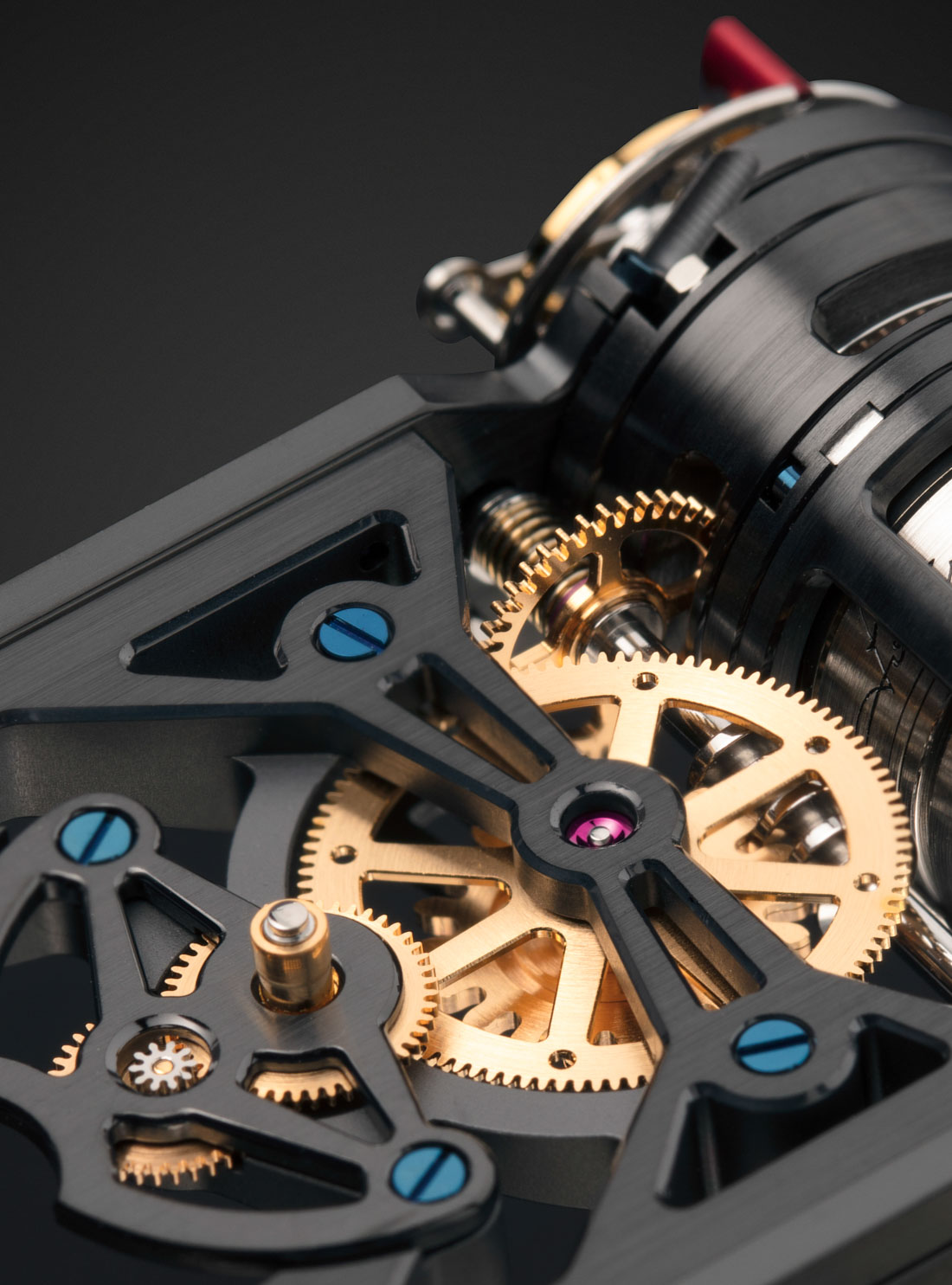
Again, the perpendicular dial creates all sorts of challenges, all mainly related to getting the tubular movement to communicate its timekeeping results towards a time display set in a completely different plane. The angle transmission that solves all this actually is an aptly named “worm screw” that meshes with the massive, though largely hidden wheel that is just under the largest wheel in the center. Look for the worm screw in the upper right segment of the image above – the wheel meshes with the large teeth of a wheel that’s two layers under the black PVD-coated bridge. It’s an ingenious solution and once again something you won’t see in watches with ordinary round or square cases.
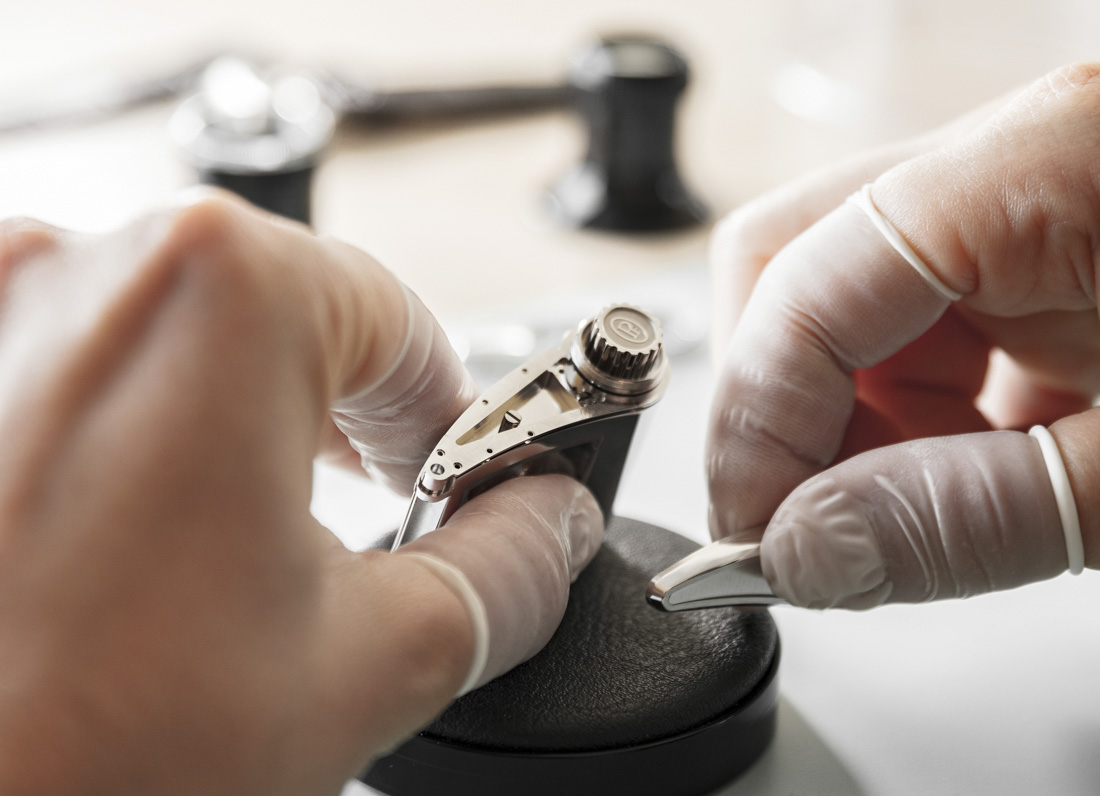
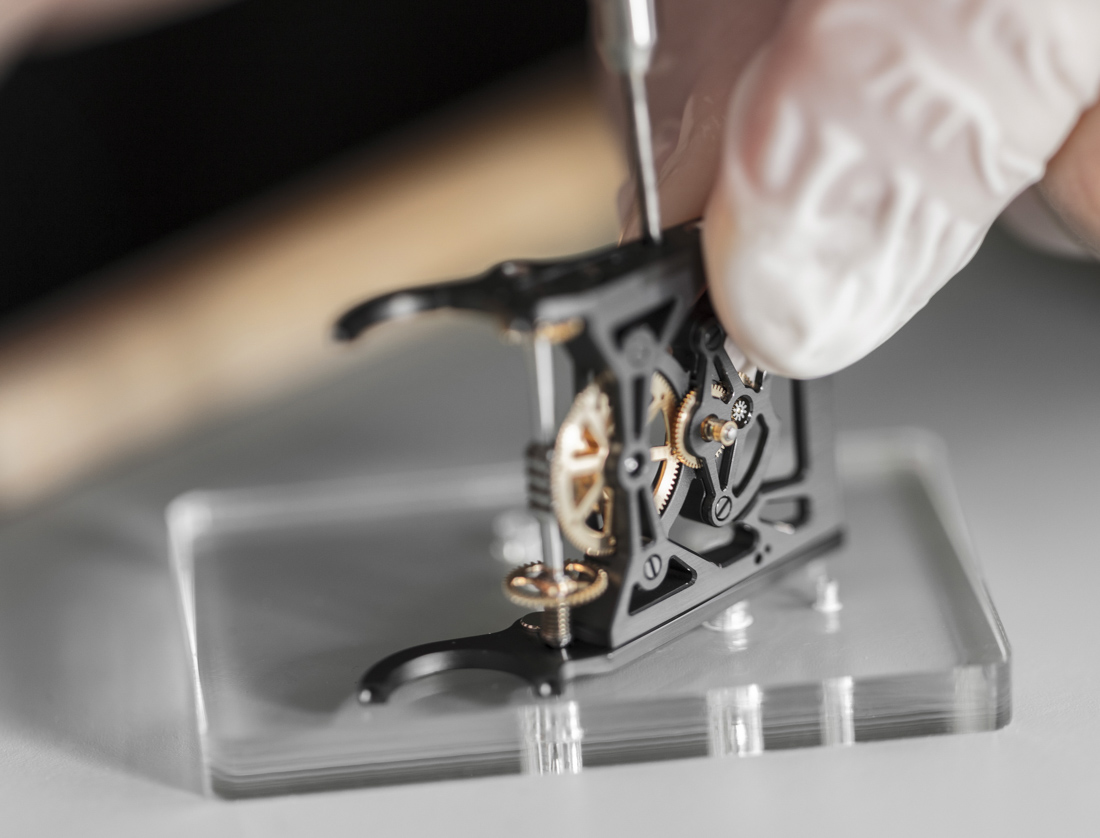
The PF390 cylindrical caliber was designed and produced wholly in-house, save for the jewels and hands – even the Breguet overcoil balance spring was produced by Parmigiani’s high-precision manufacturing subsidiary called Atokalpa. At the end of the 7-layer movement, we find the flying tourbillon that runs at an impressive 4Hz – no low-frequency traditional BS compromises there. The entire movement is composed of 302 components, a very high component count for a watch with only hours, minutes, and power reserve.
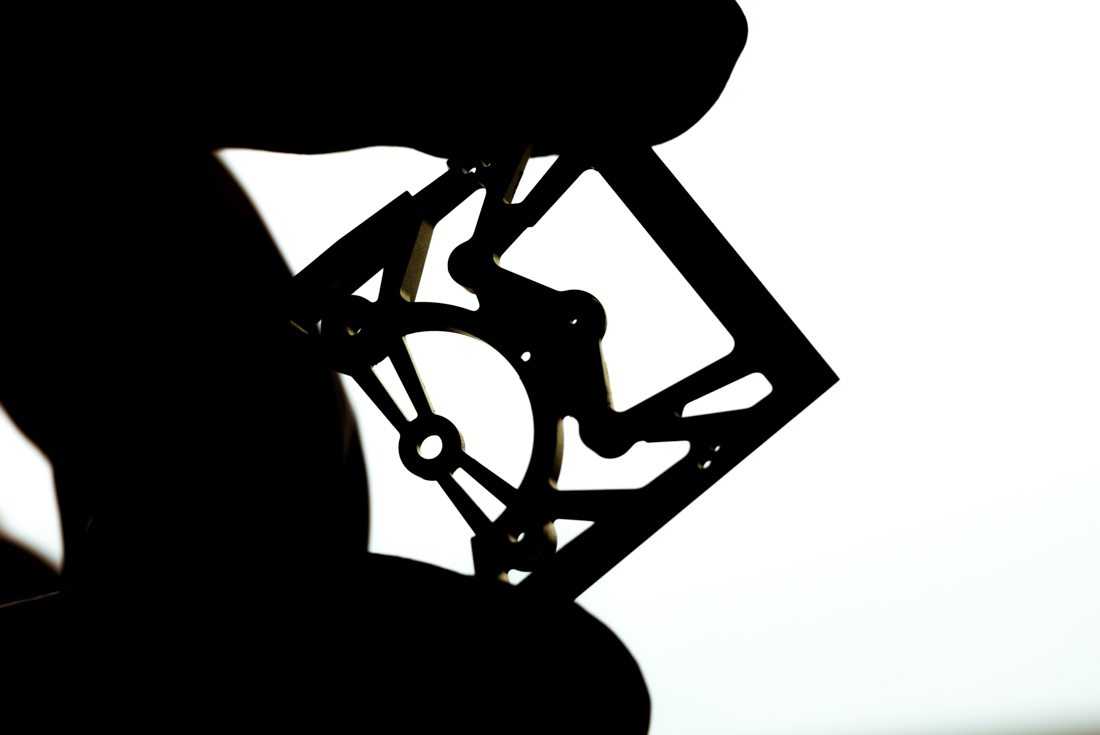
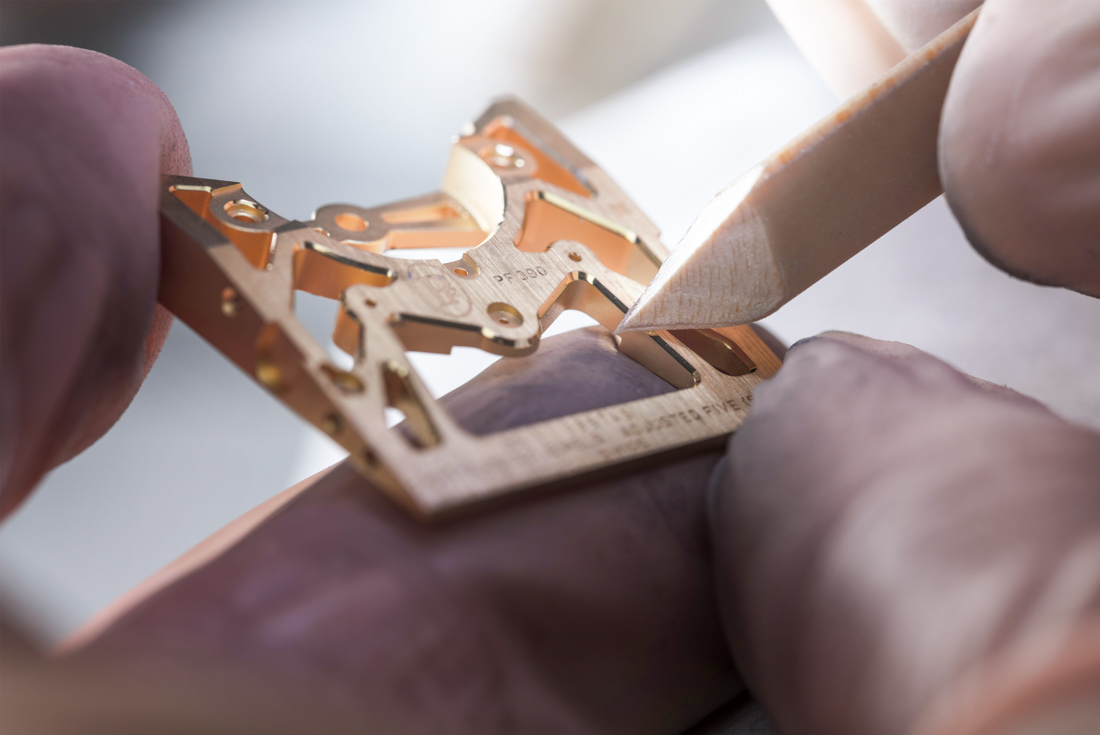
Before the plates are black PVD coated, they receive haute horlogerie grade hand finishing that involves beveled and hand polished edges on all the weird and remarkably complex, partially skeletonized plates and bridges, as well as on countersinks and wheel spokes. Despite the fact that Parmigiani has its own dial manufacture, they opted not to use one and rather went with a cool, skeletonized overlay frame.

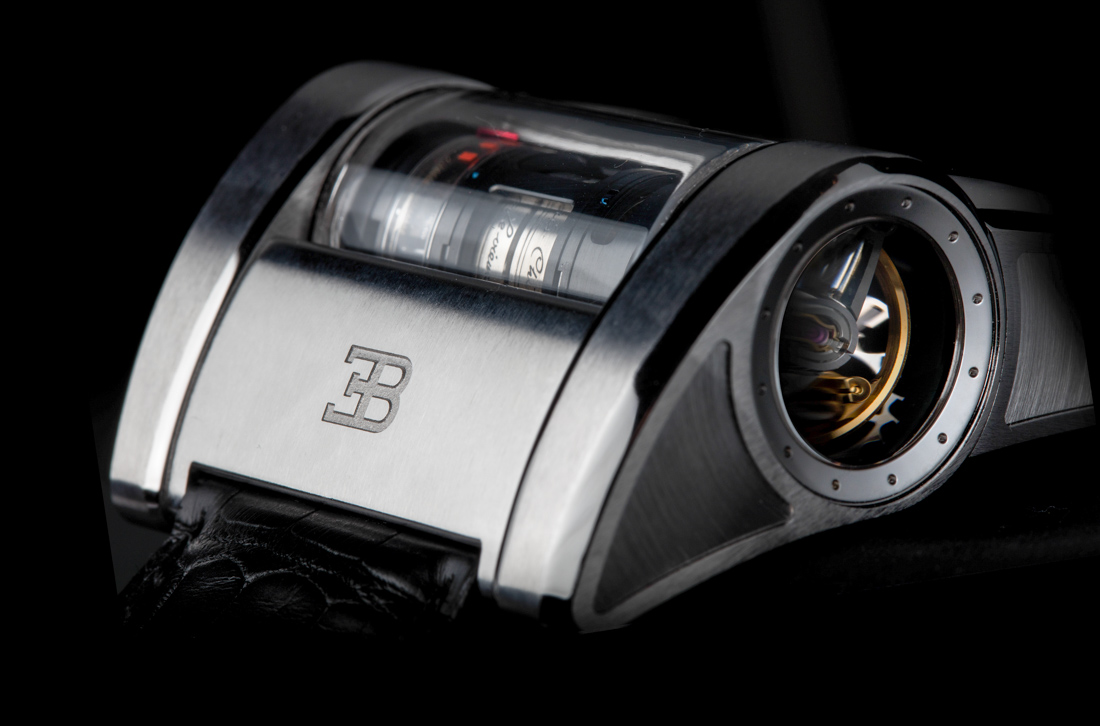
The case itself is a unique creation as well and, having seen a number of previous Parmigiani-Bugatti collaboration high-end pieces, this really is an evolution over those, comparable to how the Chiron went beyond the Veyron’s aesthetics. It’s noticeably more angular and a much more aggressive looking thing, produced in 18k white or rose gold. Strong lines and long, wide, sweeping curves meet in the 42.2mm by 57.7mm case that, like all previous Bugatti watches, is remarkably comfortable on the wrist.
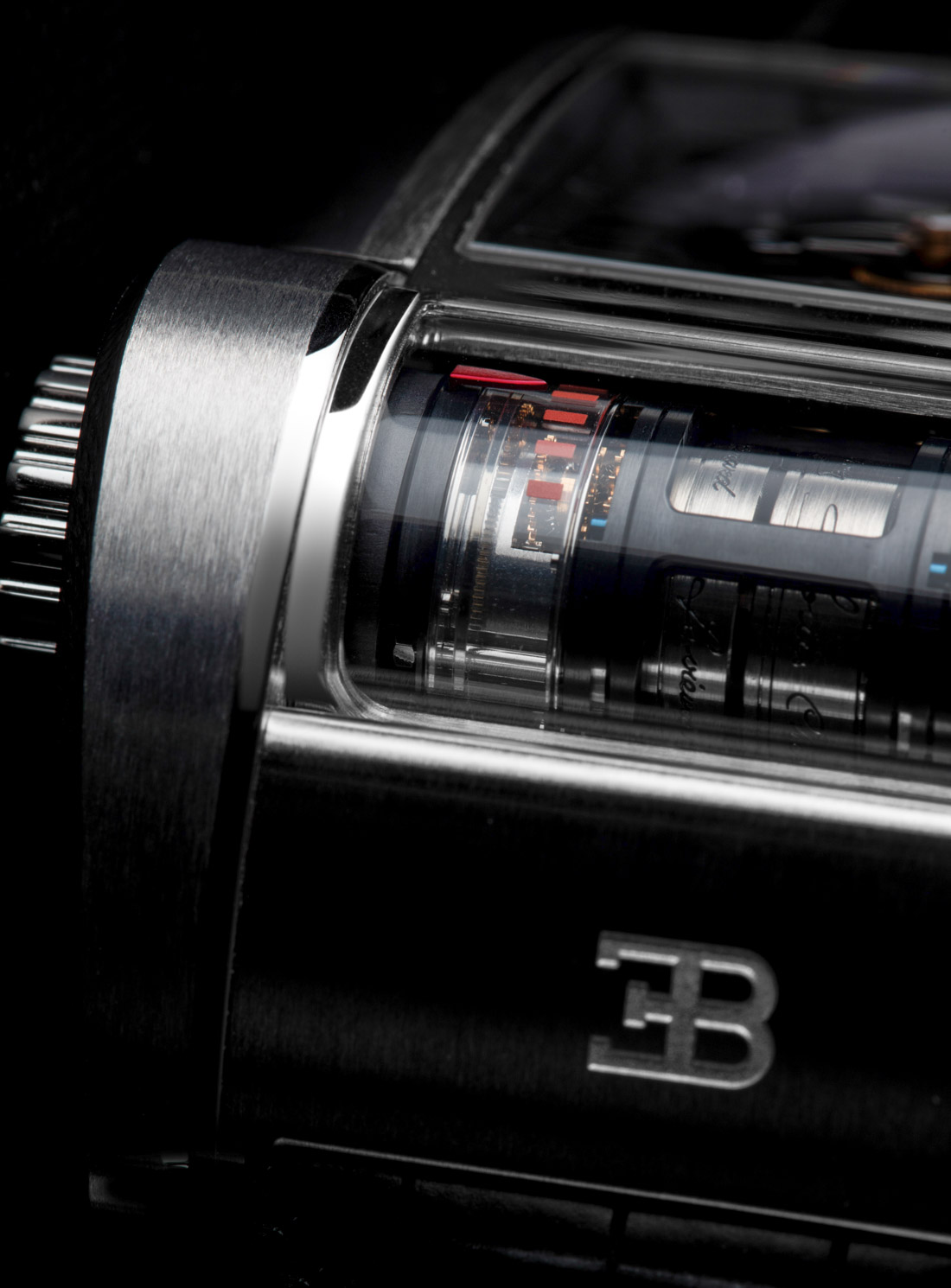
A total of four anti-reflective sapphire crystals allow for a closer look at this all-new and unique movement, revealing finer details like the flying tourbillon that appears to have been hermetically sealed off behind a porthole kind of aperture, or like the two barrels that sport the signature of Louis Chiron, Bugatti’s legendary racing driver on one, and the “Le vieux renard” (the old fox) also in reference to him on the other. Frankly, I think it would have been more appropriate to have Michel Parmigiani’s signature on the other one, not this fox nonsense.
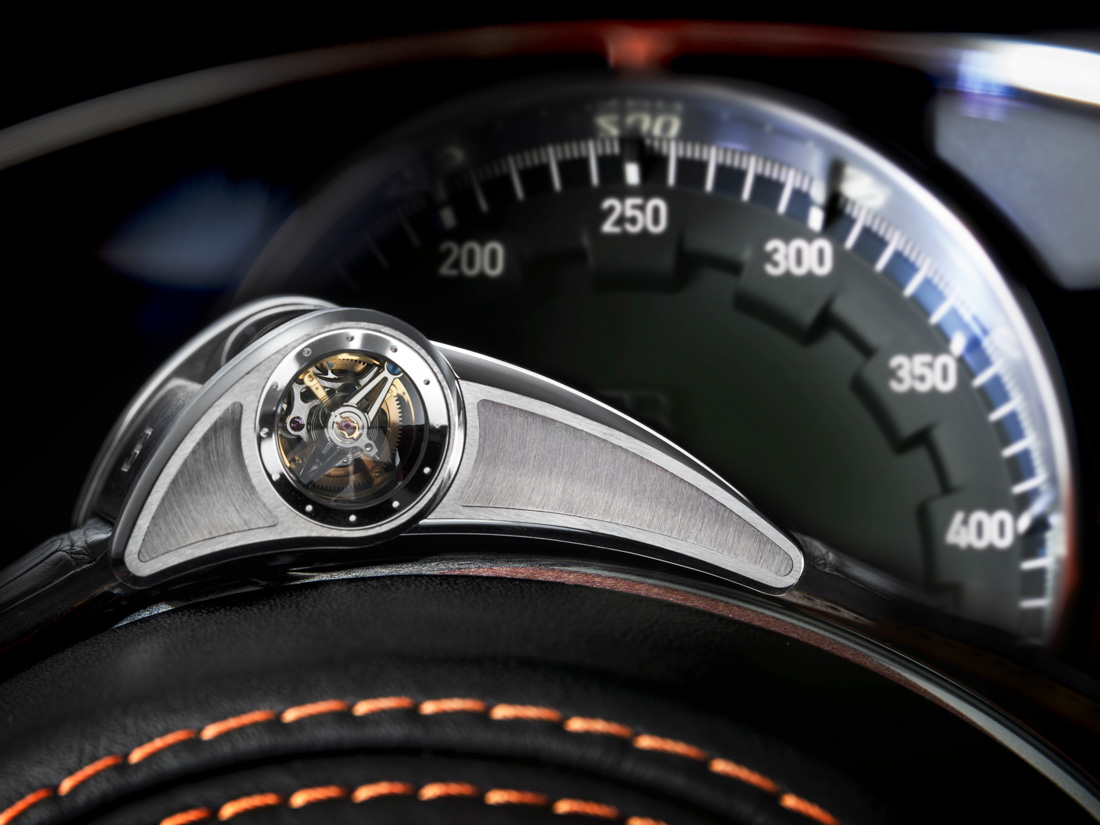
Yes, all these things are solutions to problems desperately sad and/or uninteresting and/or unhappy people would say shouldn’t have existed in the first place – and, from a strictly sensible approach, they’re actually right. You don’t need a watch dial to come in at a 12° angle to be able to read the time just how you don’t need a car capable of doing well over 400kph to get from A to B.

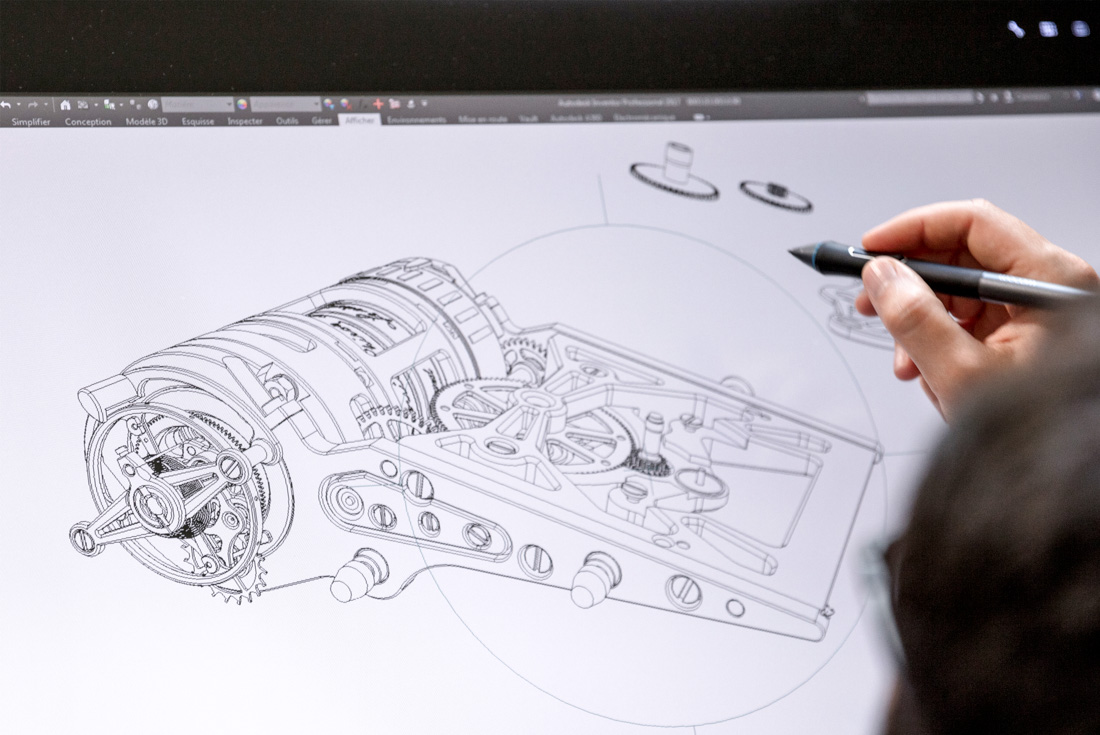
However, it appears that when watchmakers are faced with the challenge of creating a watch that goes with a hyper- or supercar, they think big and think as far out of the box, as they possibly can. It’s their great, often once in a lifetime opportunity to create something completely bonkers and get away with it – just think of the double-balance Roger Dubuis Aventador S, the Hublot LaFerrari, this Blancpain Lamborghini that came with both a tourbillon and a carrousel for no good reason whatsoever, or, of course, this Parmigiani Fleurier Type 390. It’s a brand flexing its muscles, and that’s all good!
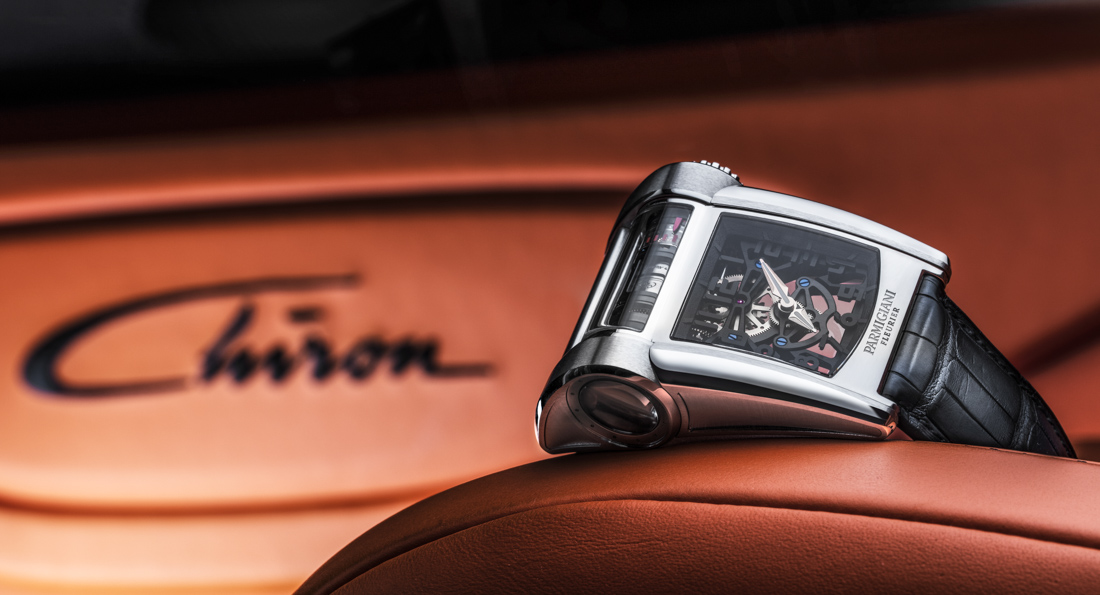
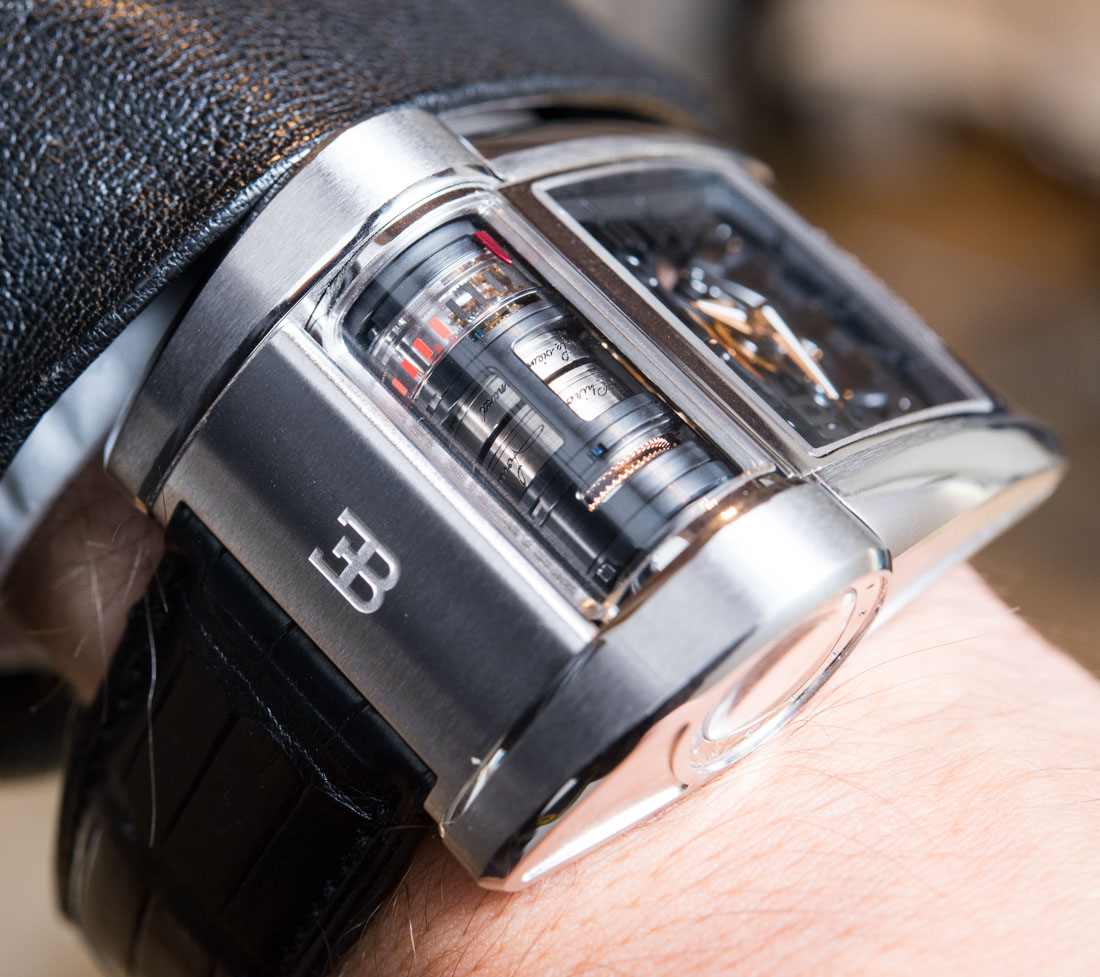
The Type 390 actually looks really cool when worn the wrong way around – and the time is facing away as well, which can be a plus sometimes…
It’s not just muscles but bank accounts that these hyper-creations make flex. Price for the Bugatti Chiron hypercar starts at around $2,500,000, while a watch from the 10-10 piece limited runs of the Parmigiani Fleurier Bugatti Type 390 will set you back 295,000 CHF. parmigiani.com

